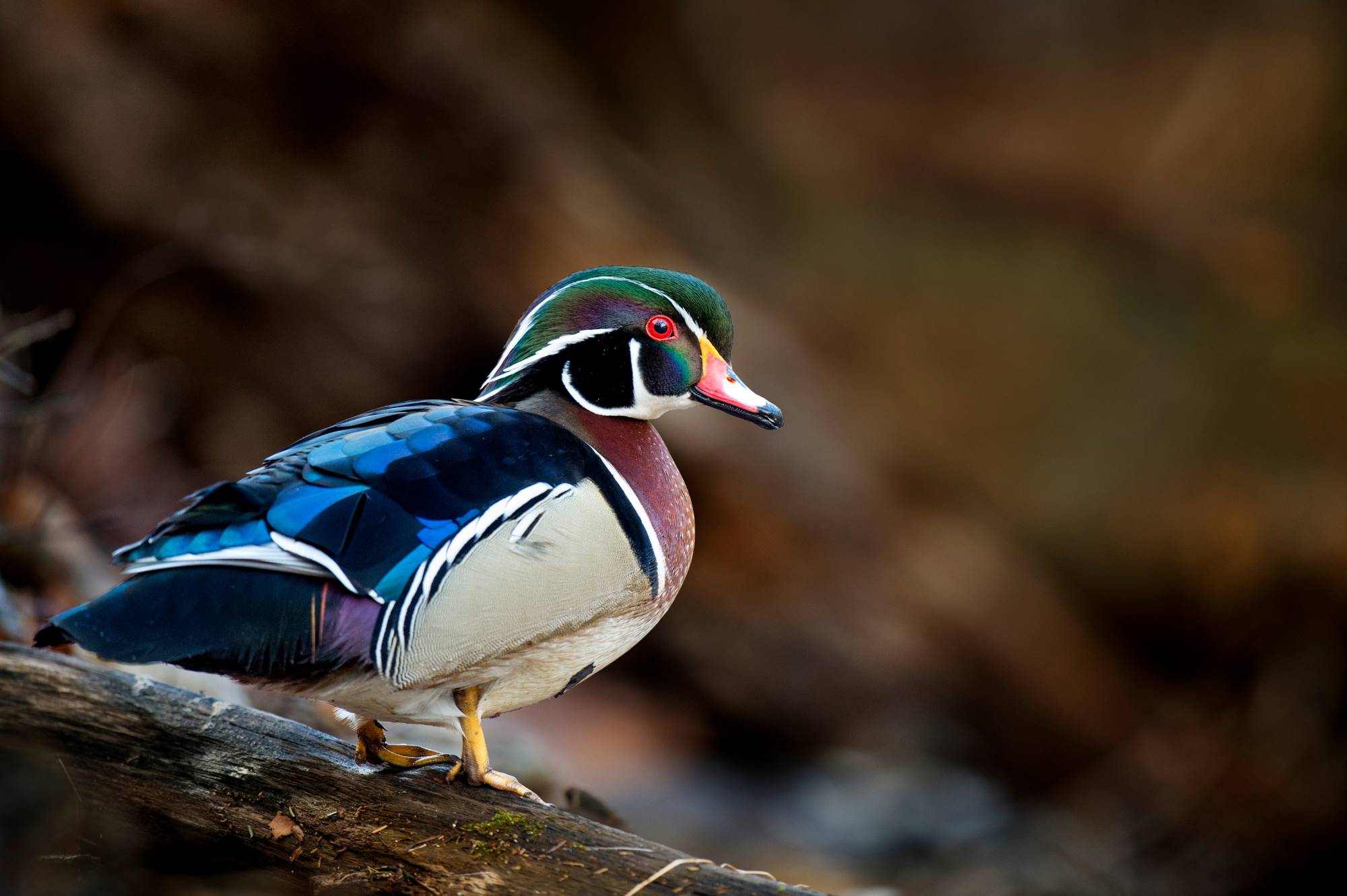
Wood Ducks in Utah
Wood Ducks, known scientifically as Aix sponsa and celebrated for their vivid plumage, are a mesmerizing presence in Utah's wetlands and riparian areas. The males of this species are especially eye-catching, with their iridescent green and purple heads marked by striking white stripes along the neck, complemented by chestnut breasts and intricately patterned sides and backs. Female Wood Ducks, though less flamboyant, possess their own understated elegance with soft gray-brown plumage, white eye-rings, and a distinctive white patch near the bill. These ducks are distinguished not just by their looks but also by their unique nesting habits, as they are among the few North American duck species known to nest in trees. In Utah, Wood Ducks are frequently spotted in wooded wetlands and along the margins of streams and lakes, areas abundant with tree cavities suitable for nesting.
One of the most remarkable characteristics of Wood Ducks is their classification as perching ducks. This unique trait is evident in their strong, clawed feet, which enable them to grasp branches and perch comfortably in trees. This adaptation is vital for their nesting strategy, as they often select tree cavities or utilize nest boxes placed in arboreal settings for laying eggs and raising their young. In flight, Wood Ducks demonstrate remarkable agility, weaving through dense woodlands with speed and grace uncommon in other waterfowl. On water, they are equally adept, exhibiting a buoyant and elegant demeanor as they swim in small flocks or pairs, particularly during the breeding season. Their diet is varied and well-suited to their habitat, including insects, seeds, and aquatic plants. In Utah's nutrient-rich wetlands, Wood Ducks thrive, utilizing the abundant food sources crucial for their sustenance.
The breeding season, beginning around April in Utah, is a critical time for Wood Ducks. As cavity nesters, they typically select tree holes or specially provided nest boxes for laying their eggs. The female Wood Duck lays between 6 to 15 eggs and is solely responsible for incubating them for about a month. One of the most extraordinary behaviors observed in Wood Ducks is their chicks' ability to leave the nest within a day of hatching. These precocial chicks, already mature and mobile, make a daring jump from the nest to the ground below, responding to the calls of their mother, and are capable of feeding themselves almost immediately.
Conservation efforts have been pivotal in the resurgence of Wood Duck populations. At the turn of the 20th century, they faced significant population declines due to habitat loss and overhunting. In Utah, as in other parts of North America, concerted efforts in habitat restoration and the provision of nesting boxes have been remarkably effective. These initiatives have facilitated a substantial recovery in Wood Duck numbers, making them one of the most common and widespread duck species on the continent, a shining example of the success of wildlife conservation and management.
In Utah's wetland ecosystems, Wood Ducks add not only vibrant splashes of color but also contribute to the biodiversity and ecological complexity. Their presence is a delight for birdwatchers and nature enthusiasts, offering a splendid display of nature's beauty and adaptability. The sight of Wood Ducks, whether it's the male's striking plumage or a family line swimming through calm waters, serves as a poignant reminder of the importance of preserving and protecting natural habitats. Wood Ducks play a significant role in the health of wetland ecosystems and bring a sense of joy and wonder to those who encounter them, enhancing the natural beauty of Utah's diverse landscapes.